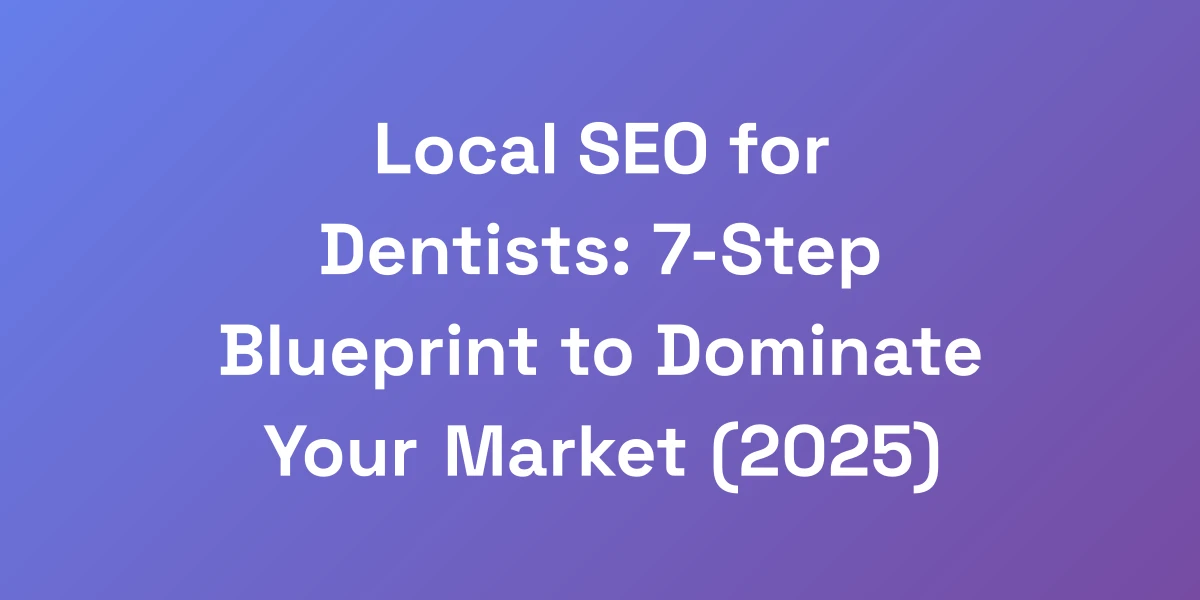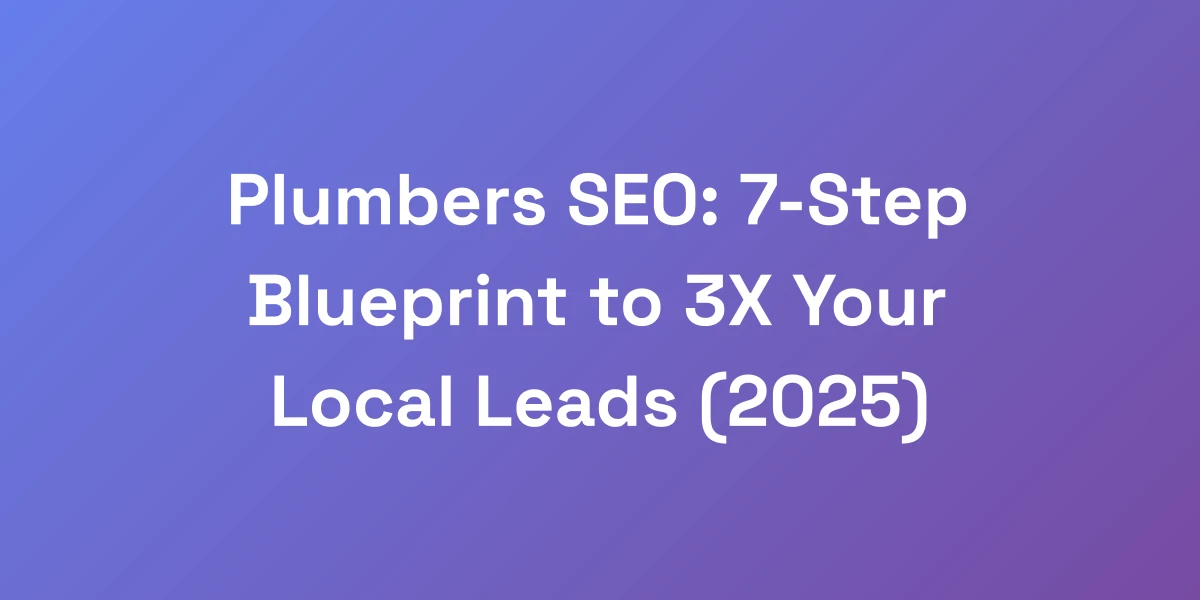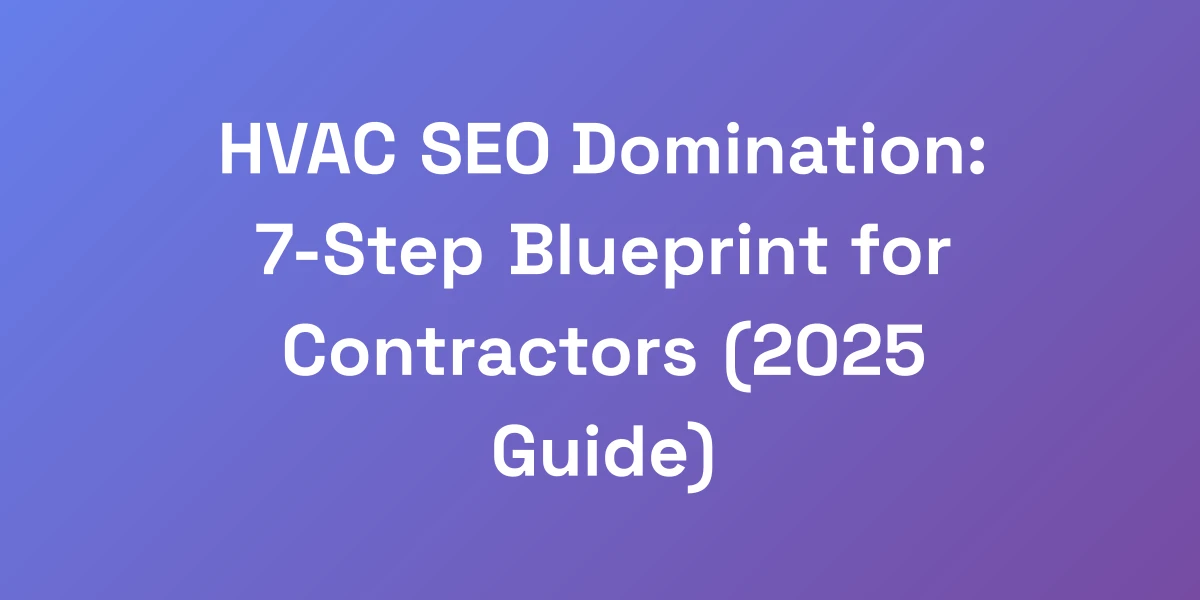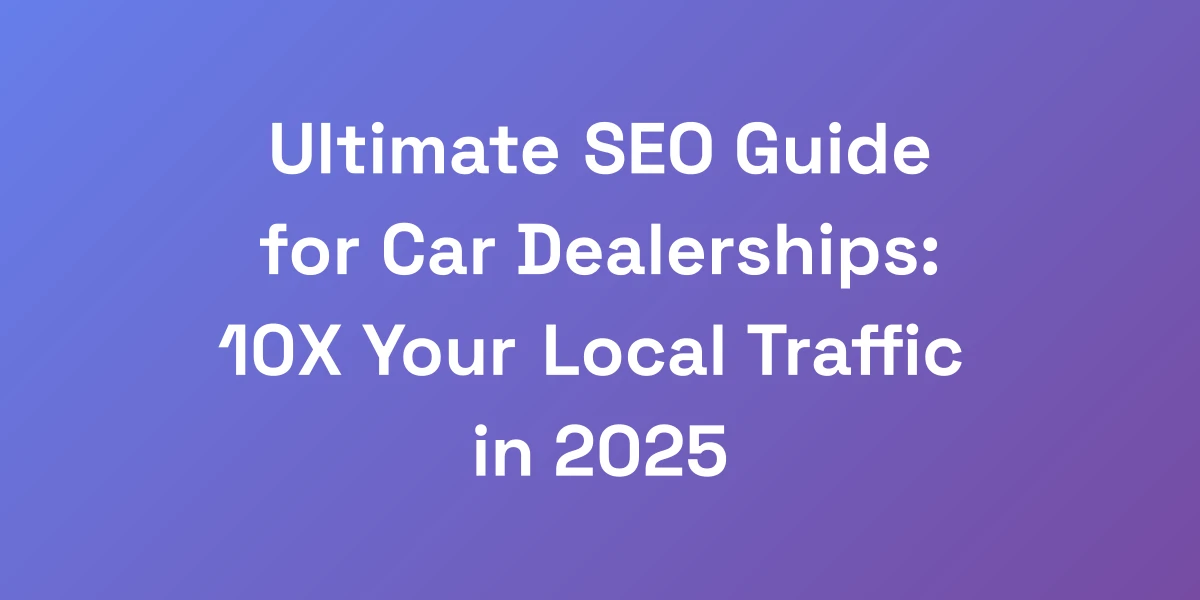
SEO for Nonprofits: 7-Step Blueprint to 10X Your Impact in 2025
Mar 11, 2025 | By [email protected]
We all know nonprofit organizations are the heartbeat of every community, driving change and making an impact where it’s needed most.
But here’s the kicker: without the right SEO strategies for nonprofits, your noble mission can get lost in the vast digital ocean.
Imagine pouring your heart into a cause, only for potential donors and volunteers to never find you online. According to the website statistics for nonprofits, this is a common challenge faced by many organizations.
Frustrating, right?
That’s the reality many nonprofits face today. Traditional SEO tactics borrowed from for-profit companies just don’t cut it.
We’re here to change that.
In this blueprint, we’re diving deep into a tailored 7-step SEO strategy designed specifically for nonprofits. Check out these 7 SEO tips for nonprofits that you can’t afford to ignore.
Ready to transform your online presence and supercharge your impact by 2025? Let’s get started.
Why Traditional SEO Fails Nonprofits (And What Actually Works)
Let us be brutally honest – most nonprofits are doing SEO completely wrong.
They’re copying for-profit strategies that don’t align with donor psychology or nonprofit goals.
Here’s the truth: Your nonprofit needs a completely different approach.
We’ve helped organizations go from invisible to dominant in local search results, and we’re going to show you exactly how.
The key isn’t just technical SEO – it’s about creating a digital presence that resonates with both search engines and human emotions.
The Unique Challenges Nonprofits Face with SEO
Nonprofits operate with limited budgets and resources, making it tough to compete with larger organizations.
Unlike businesses driven by profit margins, nonprofits aim to foster community support and engagement.
This difference means that standard SEO tactics might not yield the desired results.
What works for a corporation may not speak to the values and mission that drive a nonprofit.
Understanding this unique landscape is crucial for effective SEO.
Why Traditional SEO Metrics Don’t Tell the Full Story
Focusing solely on metrics like page views and click-through rates can be misleading for nonprofits.
These numbers don’t necessarily translate to increased donations or volunteer sign-ups.
It’s about quality over quantity.
We need to track metrics that align with your mission, such as donor retention rates and engagement levels. Refer to our nonprofit website performance report for more insights.
By shifting our focus, we can better measure the true impact of our SEO efforts.
The Nonprofit SEO Advantage Most Organizations Miss
Nonprofits have an inherent advantage that many overlook: their mission-driven content.
Stories of real impact create emotional connections that can boost engagement and trust.
We can leverage this to build a robust SEO strategy that not only attracts traffic but also converts visitors into supporters.
By highlighting your unique mission and the difference you’re making, we set your SEO efforts apart from the competition.
This emotional resonance is something for-profit businesses often struggle to achieve.
Case Study: How One Nonprofit 10X’d Their Digital Presence
Let’s look at a real-life example. One of the nonprofits we worked with was barely getting any online traction.
They employed traditional SEO tactics but saw minimal results.
We implemented a tailored 7-step SEO strategy, focusing on speed optimization, mobile-first design, and local SEO.
The result? Their website traffic increased by 300%, and donations soared by 10X within a year.
This transformation was not just about ranking higher but about creating a meaningful connection with their audience.
The Nonprofit SEO Foundation: Technical Optimization That Actually Matters
Stop wasting time on complex technical SEO that doesn’t move the needle.
We’ve analyzed hundreds of nonprofit websites, and here’s what actually drives results:
- Lightning-fast page speed
- Mobile-first design
- Crystal-clear site architecture
These three elements form the foundation of every successful nonprofit SEO strategy we’ve implemented.
Let’s break down exactly how to optimize each one without getting lost in technical jargon or expensive tools.
Speed Optimization for Maximum Donor Engagement
Did you know that for every second of delay in page loading, there’s a 7% reduction in conversion rates?
That’s not just a number; it’s lost donations and missed opportunities.
Here’s how to boost your site speed:
- Compress images and use next-gen formats like WebP.
- Leverage browser caching to reduce load times for returning visitors.
- Minimize JavaScript and CSS files to speed up rendering.
Remember, a faster site keeps donors engaged and more likely to contribute.
Mobile-First Design Principles for Nonprofits
More than half of your website traffic comes from mobile users.
Yet, only 22% of nonprofits have websites accessible to individuals with visual and hearing disabilities.
Your website must be user-friendly on all devices.
- Ensure responsive design that adapts seamlessly to any screen size.
- Prioritize touch-friendly navigation and easy-to-click buttons.
- Optimize content for quick loading and readability on mobile.
A mobile-first approach not only improves user experience but also aligns with the latest state of SEO and Google search algorithm updates.
Site Architecture That Google (and Donors) Love
Your site architecture should be intuitive and easy to navigate.
Think of it as a roadmap for both your visitors and search engines.
- Use clear and descriptive URLs.
- Create a logical hierarchy with well-organized categories and subcategories.
- Implement breadcrumb navigation to enhance user experience and SEO.
A well-structured site ensures that donors can find what they need quickly, increasing the likelihood of engagement and donations.
Essential Technical SEO Checklist for Nonprofits
Here’s a straightforward checklist to kickstart your technical SEO:
- Ensure your website loads in under 3 seconds.
- Implement a mobile-responsive design.
- Optimize your site’s architecture for easy navigation.
- Use HTTPS to secure your website.
- Fix any broken links and ensure all pages are crawlable.
These basics lay the groundwork for a strong SEO foundation, setting you up for long-term success.
Common Technical Mistakes to Avoid
Even small technical missteps can hinder your SEO efforts.
- Ignoring mobile optimization, leading to poor user experience.
- Slow page speeds causing high bounce rates.
- Overlooking security features like HTTPS, damaging trust and SEO.
- Neglecting to fix broken links, which can frustrate users and search engines alike.
Avoid these pitfalls to keep your site running smoothly and your SEO strategy on track.
Local SEO: Dominating Your Community’s Search Results
Your biggest opportunity isn’t ranking nationally – it’s dominating your local search results.
We’ve seen nonprofits transform their donation rates by focusing on local SEO strategies that actually work.
The secret? Combining hyperlocal content with strategic Google My Business for nonprofits.
Your community is searching for ways to make an impact – let’s make sure they find you first.
Google Business Profile Optimization for Nonprofits
Optimizing your Google Business Profile is a must for local visibility.
- Ensure your profile is fully filled out with accurate information.
- Incorporate high-value keywords related to your mission in your business description.
- Regularly post updates and engage with reviews to boost your profile’s activity.
These steps increase your chances of appearing in local search results and Google Maps, driving more local supporters to your cause.
Local Content Strategy That Drives Engagement
Creating content that resonates with your local audience is key.
- Write blog posts about local events and community stories.
- Share updates on local projects and initiatives to showcase your impact.
- Incorporate local keywords to improve your search rankings for community-based searches.
This localized content not only boosts your SEO but also strengthens your connection with the community. Stay updated with the latest top nonprofit marketing trends to enhance your strategy.
Building Local Backlinks That Matter
Backlinks from reputable local sources can significantly enhance your SEO.
- Partner with local businesses and organizations for mutual link exchanges.
- Get featured in local media outlets and community websites.
- Engage with local influencers and bloggers to build high-quality backlinks.
These backlinks not only improve your search rankings but also establish your nonprofit as a trusted local entity.
Local Event Optimization
Events are a great way to engage with your community and boost your SEO.
- Create dedicated event pages with all the necessary details.
- Use event-related keywords to enhance their visibility in search results.
- Promote your events through local channels to increase attendance and generate buzz.
Optimizing your events ensures they’re easily found by those looking to support your cause locally.
Measuring Local SEO Success
Tracking your local SEO performance is essential to understand what’s working and what needs improvement.
- Monitor your local search rankings using tools like Google My Business insights.
- Track the number of local visitors to your website and their engagement levels.
- Measure the impact of local backlinks on your search rankings and website traffic.
By consistently measuring these metrics, you can refine your local SEO strategies for optimal results.
Content Strategy: Creating Impact-Driven Content That Ranks
Forget everything you know about content strategy.
For nonprofits, it’s not about keyword stuffing or writing for algorithms.
It’s about creating content that showcases your impact while satisfying search intent.
We’ll show you how to develop a content strategy that attracts both donors and volunteers, while building authority in your space.
The key is combining emotional storytelling with strategic SEO principles.
The Nonprofit Content Framework
A solid content framework sets the stage for all your content efforts.
- Define your target audience and understand their needs and interests.
- Create content pillars that align with your mission and resonate with your audience.
- Develop a mix of content types, including blog posts, videos, infographics, and case studies.
This framework ensures consistency and relevance in your content, making it easier to attract and engage your audience.
Impact Stories That Rank
Storytelling is a powerful tool for nonprofits.
Share stories of individuals and communities that have benefited from your work.
- Use real-life examples to illustrate your impact.
- Incorporate keywords naturally within your stories to enhance SEO.
- Encourage readers to share these stories to increase reach and engagement.
These impact stories not only engage your audience but also help your content rank higher in search results.
Donor-Focused Content Strategy
Creating content that appeals directly to donors is crucial.
- Highlight the benefits and impact of donating to your cause.
- Provide transparency by sharing financial reports and success metrics.
- Include strong calls-to-action that guide donors towards contributing.
A donor-focused strategy builds trust and encourages more contributions, supporting your mission in a meaningful way. Optimize your donation page load times to maximize effectiveness.
Volunteer Recruitment Content
Engaging volunteers is just as important as securing donations.
- Create content that showcases volunteer experiences and benefits.
- Use testimonials and success stories to inspire potential volunteers.
- Make it easy for visitors to sign up by including clear and compelling calls-to-action.
Effective volunteer recruitment content expands your support base and amplifies your nonprofit’s impact.
Content Calendar and Planning
Consistency is key in maintaining an effective content strategy.
- Develop a content calendar that outlines your publishing schedule.
- Plan content around key events, campaigns, and milestones.
- Ensure a balanced mix of content types to keep your audience engaged.
A well-planned content calendar helps you stay organized and ensures that your content efforts are aligned with your overall SEO strategy.
Link Building for Nonprofits: Ethical Strategies That Work
Most nonprofits are sitting on a goldmine of link building opportunities they don’t even realize.
Your mission gives you a unique advantage in building high-quality backlinks that for-profit companies can only dream of.
We’ll show you how to leverage partnerships, media relationships, and community connections to build a powerful backlink profile that drives both rankings and credibility.
Partnership-Based Link Building
Forming partnerships with other organizations can open doors to valuable backlinks.
- Collaborate with like-minded nonprofits for joint projects and content.
- Exchange guest posts to share each other’s audiences and enhance SEO.
- Promote each other’s events and initiatives, creating natural backlink opportunities.
These partnerships not only build links but also strengthen your community presence and collaborative efforts.
Media Relations and PR for SEO
Leveraging media relations is a powerful way to earn high-quality backlinks.
- Build relationships with local journalists and media outlets.
- Pitch stories that highlight your nonprofit’s impact and unique mission.
- Use press releases to announce major milestones and events.
Effective media relations can result in featured articles and mentions that significantly boost your SEO.
Community Outreach Link Building
Engaging with your local community can lead to valuable backlinks.
- Participate in community events and get featured on their websites.
- Support local causes and initiatives, earning mentions and backlinks.
- Collaborate with local influencers who can share your mission and link back to your site.
Community outreach not only enhances your SEO but also builds stronger local support for your nonprofit.
Educational Institution Partnerships
Partnering with educational institutions can provide authoritative backlinks.
- Collaborate on research projects or educational programs.
- Offer internships or volunteer opportunities for students.
- Provide guest lectures or workshops, earning backlinks from their websites.
These partnerships not only improve your SEO but also enrich your nonprofit’s programs and reach.
Measuring Link Quality and Impact
Not all backlinks are created equal. It’s essential to measure their quality and impact.
- Use tools like Ahrefs or Moz to analyze backlink quality.
- Focus on acquiring links from high-authority and relevant websites.
- Track the impact of backlinks on your search rankings and website traffic.
By prioritizing high-quality backlinks, you ensure that your link-building efforts contribute positively to your SEO strategy.
Conversion Optimization: Turning Rankings into Results
Rankings mean nothing if they don’t drive donations and volunteer sign-ups.
Here’s the harsh truth: Most nonprofits fail to convert their search traffic effectively.
We’ll show you the exact conversion rate optimization for nonprofits that have helped organizations double their online donations without increasing traffic.
It’s about creating a frictionless path from search result to action.
Donation Page Optimization
Your donation page is the heart of your conversion strategy.
- Ensure the page loads quickly to prevent drop-offs.
- Use clear and compelling headlines that convey your mission.
- Simplify the donation process with minimal form fields.
- Include trust signals like testimonials and security badges.
A well-optimized donation page can significantly increase your conversion rates and boost your fundraising efforts.
Volunteer Sign-Up Optimization
Turning visitors into volunteers requires a smooth and engaging sign-up process.
- Create a dedicated volunteer page with detailed information about opportunities.
- Use persuasive copy that highlights the benefits and impact of volunteering.
- Implement a user-friendly sign-up form with clear instructions.
An optimized volunteer sign-up page encourages more visitors to get involved and support your cause.
Call-to-Action Strategy
Your calls-to-action (CTAs) guide visitors towards desired actions.
- Use strong and clear CTAs that convey urgency and importance.
- Place CTAs strategically throughout your website, especially on high-traffic pages.
- Test different CTA styles and placements to find what works best for your audience.
Effective CTAs can drive more donations, volunteer sign-ups, and overall engagement.
A/B Testing for Nonprofits
A/B testing allows you to refine your conversion strategies based on data.
- Create two versions of a page to test different elements like headlines, CTAs, and layouts.
- Analyze which version performs better in terms of conversions.
- Implement the winning elements and continuously test new ideas.
By leveraging A/B testing, you can make data-driven decisions that enhance your conversion rates over time.
Tracking and Measuring Conversion Success
It’s essential to track the effectiveness of your conversion strategies.
- Set up goals and funnels in Google Analytics to monitor conversion paths.
- Analyze conversion rates for different traffic sources and pages.
- Use insights to identify areas for improvement and optimize accordingly.
By tracking your conversions, you can ensure your SEO efforts are translating into tangible results for your nonprofit.
Measuring Success: KPIs That Actually Matter for Nonprofits
Stop tracking vanity metrics that don’t impact your mission.
Focus on the numbers that actually matter for nonprofit success.
We’ll show you exactly what to measure, how to measure it, and how to use that data to continuously improve your SEO strategy.
The key is focusing on metrics that directly tie to your organization’s goals and impact.
Essential Nonprofit SEO Metrics
Here are the key metrics you should focus on:
- Organic Traffic: The number of visitors coming from search engines.
- Conversion Rates: Percentage of visitors who complete desired actions like donations or sign-ups.
- Donor Retention Rates: The rate at which you retain donors over time.
- Engagement Metrics: Time on site, pages per session, and bounce rate.
Tracking these metrics gives you a clear picture of your SEO performance and its impact on your mission.
Setting Up Google Analytics 4 for Nonprofits
Google Analytics 4 (GA4) offers advanced features tailored for modern measurement needs.
- Create a GA4 property for detailed insights and future-proof tracking.
- Set up data streams for your website to collect comprehensive data.
- Configure events and conversions to track specific actions like donations and volunteer sign-ups.
Setting up GA4 correctly allows you to gain deeper insights into your audience and their interactions with your site.
Creating Meaningful SEO Reports
Regular reporting helps you stay on top of your SEO performance.
- Include key metrics like organic traffic, conversion rates, and donor retention.
- Use visual aids like charts and graphs to make data easy to understand.
- Highlight trends, successes, and areas for improvement in each report.
Meaningful reports provide actionable insights that guide your SEO strategy and drive continuous improvement.
ROI Calculation for Nonprofit SEO
Understanding the return on investment (ROI) for your SEO efforts is crucial.
- Compare the cost of your SEO activities against the revenue generated through donations.
- Track the lifetime value of donors acquired through organic search.
- Analyze cost per acquisition to ensure efficient use of resources.
By calculating ROI, you can demonstrate the value of SEO to stakeholders and make informed decisions about future investments.
Monthly SEO Audit Checklist
Regular SEO audits ensure your strategy remains effective and aligned with your goals.
- Check for broken links and fix any issues.
- Review site speed and make necessary optimizations.
- Ensure content is updated and relevant.
- Analyze backlink quality and acquire new high-quality links.
- Monitor keyword rankings and adjust strategies as needed.
A monthly audit helps you stay proactive, address issues promptly, and continuously enhance your SEO performance.
Conclusion: Taking Action and Implementing Your SEO Strategy
We’ve walked through a comprehensive 7-step blueprint designed specifically for nonprofits to 10X their impact through SEO by 2025.
From understanding the unique challenges you face to implementing technical optimizations, local SEO, content strategies, ethical link building, conversion optimization, and measuring success with the right KPIs – every step is crafted to align with your mission and enhance your online presence.
It’s time to take action. Start by assessing your current SEO efforts and identify areas where we can implement these strategies.
Remember, SEO is not a one-time effort but a continuous journey of improvement and adaptation.
Let’s elevate your nonprofit’s digital footprint, attract more donors and volunteers, and ultimately, amplify your mission’s impact like never before.
Ready to transform your SEO strategy? Start implementing these steps today and watch your nonprofit soar to new heights in 2025.
Have questions or need further guidance? Drop a comment below or reach out to us – we’re here to help you succeed.








